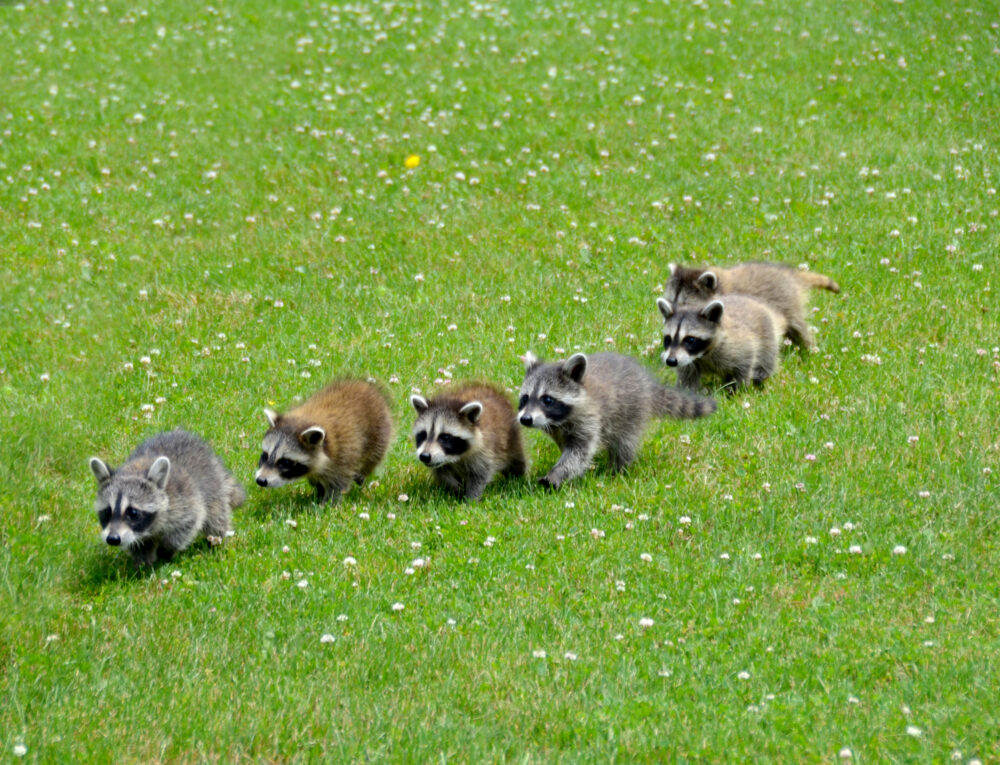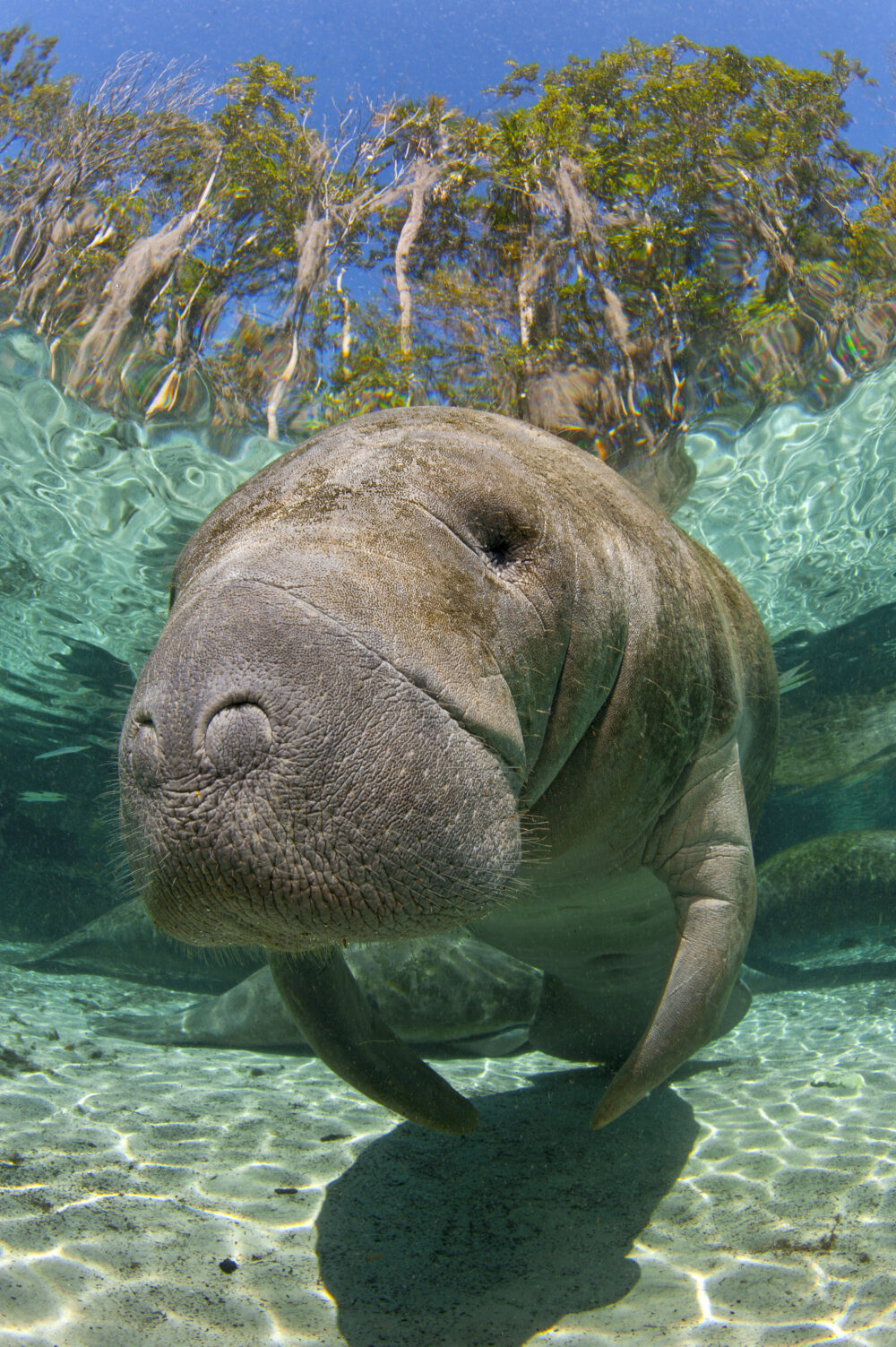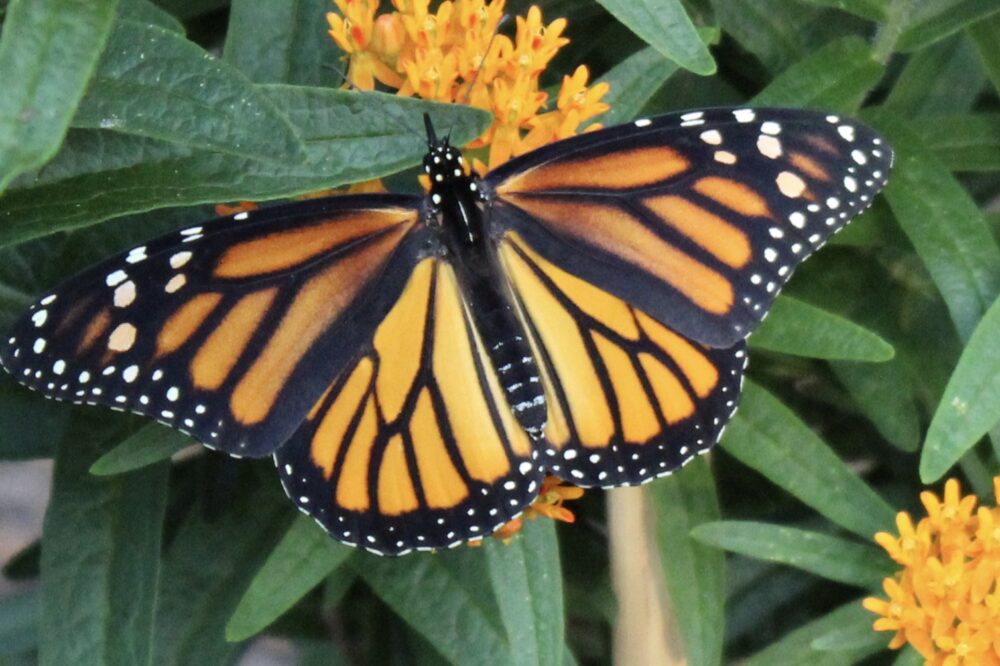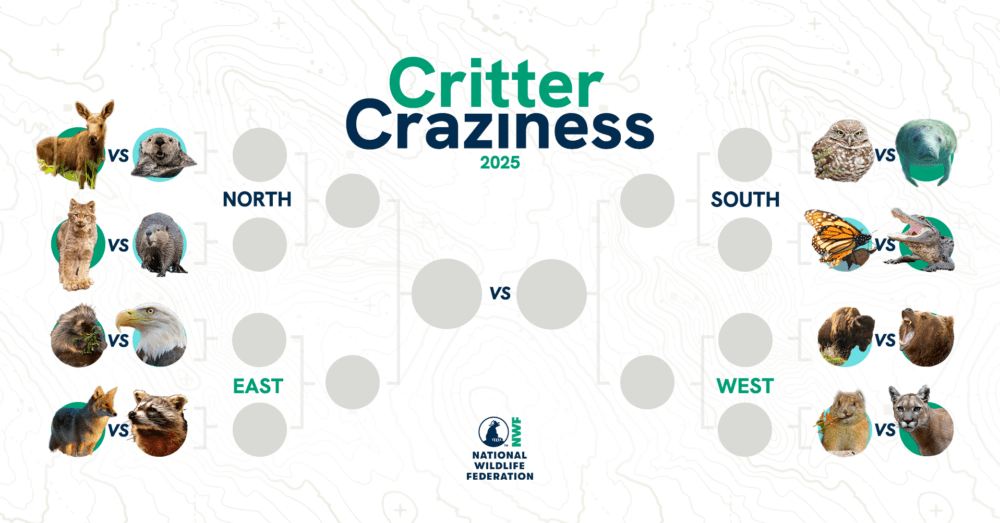We have much more to do and your continued support is needed now more than ever.
Ways Google+ Can Help Nature and Wildlife Lovers
This is a guest post by Adam Jack, who is passionate about wildlife watching and wildlife citizen science. He’s developed tools (such as WildObs) for naturalists and nature-lovers and helps connect wildlife enthusiasts with National Wildlife Federation’s Wildlife Watch.
On Twitter I’ve discovered and enjoyed many wonderful characters while exploring my passion for wildlife. There are park rangers and wildlife photographers, environmental entrepreneurs and advocates, wildlife gardeners and avid birders. Fascinating people … both connected to nature and connecting others to nature. I might never have encountered these folks without Twitter, and I’ve learned much to value from them all.
Google+ promises more of the same, plus some interesting new tools to make collaboration easier and richer.
 Playing with Google+ Circles:
Playing with Google+ Circles:
What ties Google+ together are Circles, groups of profiles and they allow you to organize the people you publish to, and to pick what groups you participate with or offer a hangout to. Create your Circles with Birders, or Wildlife Advocates, Nature Lovers or even smaller subsets (Colorado Wildflower Photographers) and communicate freely.
In the future, there will be a way to search Google+ profiles. Right now with the initial release, people are creatively using Google Documents to share their profile information and to find people of certain interests. They create a public spreadsheet and a public form to fill the spreadsheet.
For example:
- Google+ Nature Lovers: Add yourself at http://bit.ly/GplusNatureForm
- Google+ Birders: Add yourself at http://bit.ly/GplusBirdersForm
Google+ Photo Sharing
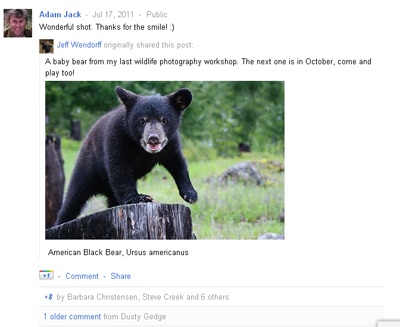 Google+ Photo posting can be done through applications either on the iPhone or Android, and it allows for multimedia; a much richer experience for eye-catching wildlife and nature photographs.
Google+ Photo posting can be done through applications either on the iPhone or Android, and it allows for multimedia; a much richer experience for eye-catching wildlife and nature photographs.
I spend my best times offline outdoors, and when hiking I pause for a plump puffball ready to pop, or a gnarly cactus in colorful bloom.
With a mobile device you can snap that picture without interrupting the moment. Photos are automatically uploaded behind the scenes, and next time you are at your desk the images are already in Google+, ready to share with a click and a note.
It is vastly more pleasant for all involved than tapping out something terse on the phone, and consequently I expect a lot more social sharing from the field.
Google+ Hangouts
 Google+ Hangouts are group video chats where small groups of people can gather face to face online.
Google+ Hangouts are group video chats where small groups of people can gather face to face online.
I was initially skeptical, but I’ve become impressed (even inspired) by some of the uses created.I’ve seen loosely associated groups holding impromptu gatherings discussing how to manage their solopreneur businesses, exchanging ideas. Others compare notes on how to work with a new technology. Neither formal nor structured, just like-minded individuals collaborating. That’s really something new and, network willing, it’s even available across borders.
So many roles in the nature and wildlife community could benefit from interactions with others.
There is enormous potential, such as:
- Wildlife photographers discussing stalking tips before heading to the field.
- Non-profit preserves sharing marketing strategies.
- Organizations teaching bat monitoring techniques to groups of citizen scientists.
- Advocates or experts holding online “office hours” for the public.
No need for typing or some pre-existing chat room, no need for set-up; folks can efficiently come together around a topic and communicate.
It is too soon to really know how Google+ will grow, and how it can benefit the nature and wildlife community, however these are definitely interesting tools for the community to explore, and it’s an interesting place for our online community to expand.















